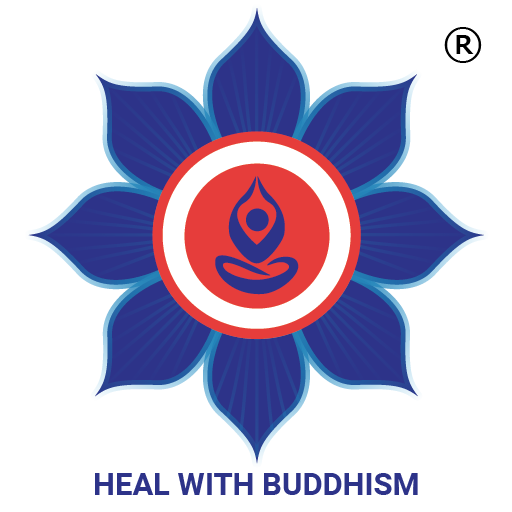Dear Readers,
I would like to wish you all a Happy 2023 filled with Joy & Good Health.
I hope that my blog article series on “Introduction to Mindfulness” encouraged you to practice mindfulness on daily basis or more regularly over the last 12 months, despite of many evolving global challenges. If you have, you are most likely to have experienced the tranquility it brings towards you as well as the harmony it extends towards the others around you. If not, I hope you have at least taken an interest in learning about this 2500 years old ancient wisdom that has captured the interest of many researches including financial experts due to its direct positive impact on individual and social wellbeing as well as the indirect impact on the economy through a happy, healthy, safe and fair society.
The purpose of this article is to provide you some basic insight to the most complex among the three pillars of mindful living, “Samadhi”: the calm & cleansed state of mind developed through “vipassanā-bhāvanā”, which is considered as the practical way of cleansing mind in return supports mindfulness practitioners to develop “Panna” [ wisdom], & “Seela” [an autonomous moral conduct].
What is “Samadhi”?
You are most likely to be familiar with the word “Samadhi” being directly translated to English as either deep or uninterrupted concentration developed through meditation.
In Buddhist doctrines “Samadhi” is described as a state of collectedness [“ekāgratā or ekaggatā”] on “ārammaṇa” [an object] that cultivates “kuśala“ [wholesome thoughts , emotions & attitudes] in an individual’s mind through the practice known as “Bhāvanā”.
Although the Pali/Sanskrit word “Bhāvanā” could be translated directly to English as meditation, it holds a much more deeper meaning in it’s original language, which can be briefly described as a practice of mental cultivation or development.
If you are a regular meditator, you are most likely to be familiar with the idea of achieving “Samadhi“ through samatha-bhāvanā, known as the mental practice of developing tranquility.
However, achieving the state of “Samadhi” through vipassanā-bhāvanā as part of eight-fold-middle path is a much more complex mental process that includes “sammā-vāyāma” [ right effort], “sammā-sati” [ right awareness ] & “sammā-samādhi” [ right concentration].
What is “vipassanā-bhāvanā”?
Buddhist doctrines that provide detailed descriptions and practical knowledge on “vipassanā bhavanā” is known as “Sathara Satipatthana Sutta”, meaning four ways of maintaining right awareness includes:
-
- kāyānupassanā
- vedanānupassanā
- cittānupassanā
- dhammānupassanā
The Pali/ Sanskrit word “vipassanā” can be briefly explained as paying special attention to four types of “ārammaṇa“ [ objects] named kāyā [ parts of the body including breath], vedanā [physical & psychological sensations], cittā [ mind & mental factors] & dhammā [ true nature of the world or the world as it is]
In “Satipatthana Sutta” Gautam Buddha has specified “vipassanā-bhāvanā” as the one & only way of purifying mind:
“Ekayano ayam bhikkhave maggo sattanam visuddhiya…”
As mentioned before, it is a complex mental purification process that includes “sammā-vāyāma” [ right effort], “sammā-sati” [ right awareness] & “sammā-samādhi” [ right concentration].
What is “samyak-vyāyāma/ sammā-vāyāma” ?
[right effort]
It is the continuous effort to cleanse mind through a process, which has four aspects to it:
- First aspect of “sammā-vāyāma” [ right effort] through “vipassanā bhavanā” is to do with primary prevention. It is about guarding the mind from “akuśala ārammaṇa” [unholsome object] that cultivates “akuśala“ [unholsome thoughts, emotions & attitudes] in an individual’s mind so those can be prevented from arising.
- Second aspect of right effort is to do with secondary prevention. It is about identifying and suppressing the unwholesome thoughts, emotions & attitudes that have already arisen in the mind.
- Third aspect of right effort is to do with encouragement. It is about providing opportunity to arouse “kuśala“ [wholsome thoughts, emotions & attitudes: generosity, kindness, compassion and ect], which are not yet present.
- Fourth aspect of right effort is to do with enhancement. It is about supporting the mind to further cultivate wholsome thoughts, emotions & attitudes that have already risen in an individual’s mind.
In summary “sammā-vāyāma” [ right effort] is about the minds’ ability to maintain continuous effort to avoid & suppress negative energies, while continuously encouraging it to replace those with positive energies.
What is “samyak-smṛti / sammā-sati”?
[right mindfulness or awareness]
-
- It is the ability of our mind to maintain right view, which is the understanding about the world as a place
- that exists under the cause and effect phenomena governed by five inter-dependence laws.
- we re-live the cycle of birth, aging, sickness and death as a result of greed, aversion and ignorance within ourselves.
- of suffering due to its’ continuously changing and uncontrollable nature.
- where no one could escape “ashta loka dhamma” [ eight worldly conditions].
In brief, “sammā-sati” [right mindfulness or awareness] is about training our mind to accept the reality of unpredictable, uncontrollable and continuously changing nature of the world around us [ including ourselves] rather than the misperception of world being a controllable, predictable and permanent place, which brings us sorrow, dis-satisfaction & disappointment.
What is “samyak-samādhi / sammā-samādhi”?
It is the state of mental collectedness [“ekāgratā or ekaggatā”] that not only has the ability to cultivate wholesome thoughts , emotions & attitudes [“kuśala“], but also has the ability to analyse the “kuśala ārammaṇa” [wholsome object] that the mental collectedness [“ekāgratā or ekaggatā”] is build upon as well as the generated “kuśala“ with “Panna” [wisdom] that is liberated from greed, ignorance & hatred.
As I mentioned in my previous blog articles, [The Buddhist art of living / Wisdom, a guidance towards an autonomous moral conduct/ Lifestyle practice towards health & happiness of all beings] Mindfulness taught in Buddhism is an art of living, which provides us guidance towards an wholistic and realistic approach to life. It is a teaching that encourages us to pay more attention to the our actions at the present moment [ mental, verbal or physical] in order to achieve a better outcome based on “Cause & Effect Phenomena”. Don’t you think, it makes sense even if we were to simply relate it to Newton’s Third Law that says every action (force) in nature there is an equal and opposite reaction, though they are two different teachings.
I hope this blog article would encourage you to learn more about these amazing teachings that would definitely help us to become more content as individuals while creating a happy, healthy, safe and fair environment for others.
I hope you join me to learn more about Buddhist mindfulness throughout the year.
References & resources for further reading
-
-
- Abhidhammartha Pradeepika by Dr. Amaradasa Rathnapala
- Abhidharma: https://en.wikipedia.org/wiki/Abhidharma
- A Comprehensive Manual of Abhidhamma [The Abhidhammattha Sangaha of Achariya Anuruddha] by Bikkhu Bodhi
- A Manual of Abhidhamma by Narada Thera
- Bhavana: https://en.wikipedia.org/wiki/Bhavana
- Buddhist Dictionary by Ven. Nyanathiloka Thera
- Cause & Effect by Joseph Goldstein: https://tricycle.org/magazine/cause-and-effect/
- Eight worldly conditions by Dr. Sri Ubeysekera: https://drarisworld.wordpress.com/2021/05/05/the-eight-worldly-conditions-ashta-loka-dhamma-in-theravada-buddhism/
- Meditation Posture: https://kamalashila.co.uk/meditation-posture
- Noble eight-fold path: https://tricycle.org/magazine/noble-eightfold-path/
- Satipattana: The Heart of Buddhist Meditation by Ven. Nyanaponika Thera
-

